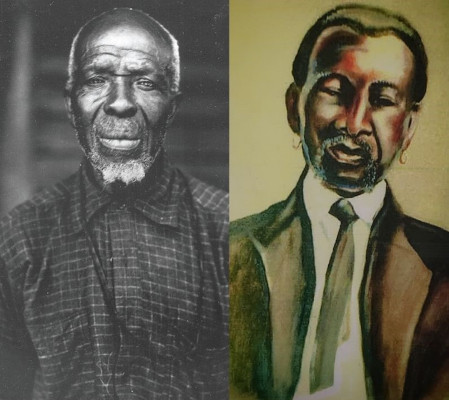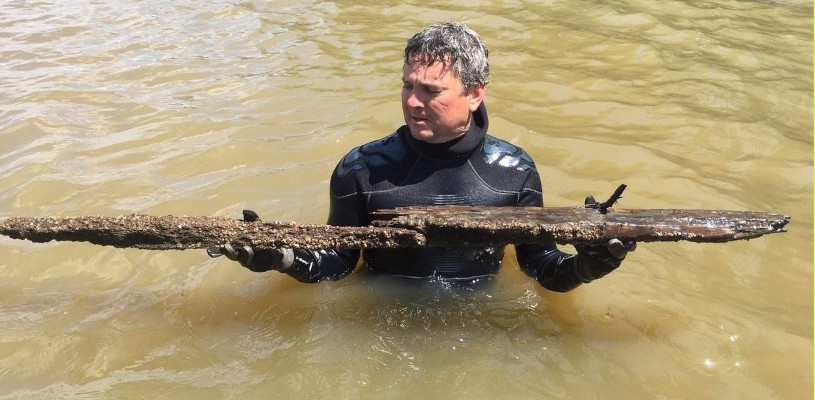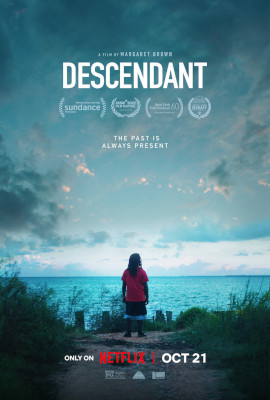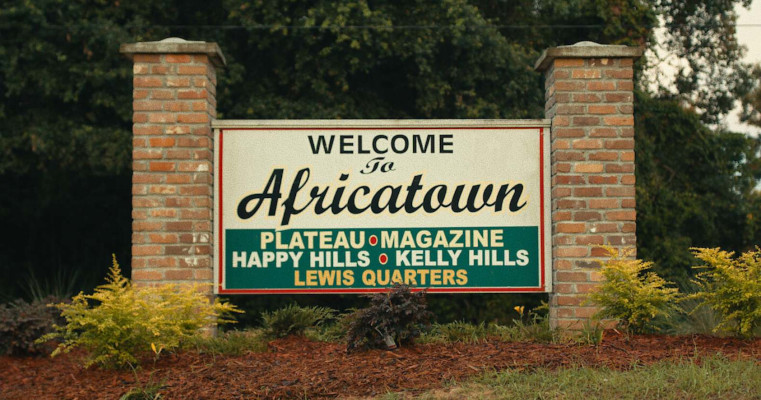
In March 1984, nine Clotilda descendants established the nonprofit Africatown Direct Descendants of the Clotilda, Inc. to preserve the heritage of their ancestors. Thirty-five years later, the discovery of the Clotilda was just the impetus needed to shine a spotlight on this historic community.
In addition to the Netflix documentary in 2022, Africatown, AL was listed on Smithsonian Magazine’s 15 Best Small Towns to Visit. In 2023, the Africatown Heritage Preservation Foundation, Alabama Historical Commission, and the History Museum of Mobile are targeted to unveil the Africatown Heritage House. The Heritage House will display historic documents, archival images, never-before-seen artifacts, and allow the silenced voices to finally be heard and their stories told. The City of Mobile is also planning to build a welcome center in Africatown.
The schooner Clotilda smuggled African captives into the U.S in 1860.
It was burned and sunk in an Alabama river after bringing 110 imprisoned people across the Atlantic, more than 50 years after importing slaves
was outlawed.
The story below gives a first-hand account of the unbearable life of slaves onboard the Clotilda.
By Darron Patterson
‘Where are we?
We had walked and walked until my legs couldn’t walk anymore. That’s when the angry woman with the shrunken head tied to her waist hit me from behind and screamed ‘Go on!’ I struggled to get up, then saw my friend Osia fall. But they beat him until he got up, too. None of us knew what was happening or why. All we knew is we wanted to go home.
In the distance we saw this big boat far away out in the water, and on the shore we saw these men with guns standing next to a smaller boat. They yelled “Get in!” to a few of us … about 15 or 20 … and then they started paddling us out toward the big boat.
When we got there, they made us take off all our clothes before we got on board. We didn’t have much on anyway, but they made everyone … even the girls … get naked. When we got on board they made us climb down wooden steps into a dark room that smelled of rotten meat, and we were chained to walls and posts. Soon, more of my friends came and were chained.
Then, more and more and many more came … all naked and getting chained to walls and posts.
Before long there was no room to move, and it suddenly went dark as they closed the top to the room. My friend Cudjo was chained right across from me and he said: ‘Are you alright Kupollee?’ I slowly nodded yes, but it was a lie. I was not alright.

Portrait of Pollee Allen (whose African name was Kupollee), one of the survivors of the Clotilda voyage from the Kingdom of Dahomey in West Africa to Alabama.
Image provided by the family.

Jason Treat and Kelsey Nowakowski for National Geographic. Clotilda rendering: Thom Tenery
It wasn’t long after that the ship began to move … shaking back and forth, up and down, and tossing us into each other. Girls were crying. Some got sick and threw up on each other. But we had no water to wash them. No water to clean ourselves from the messes when made after relieving ourselves.
The men with guns on deck would throw bread and raw meat down to us through the holes in the door to the room. The holes let us breathe.
This went on for around 7 days. We know because we counted the sunrises. We knew to get back home we would have to know how many sunrises it would take.
Suddenly, the door opened and they unchained us 1-by-1. They took a few of us on deck to do what they called “exercise.” But it was only to walk around the deck of the big boat two times. When we walked we couldn’t see any land on any side of the ship we were on. There was no land! Our home was gone! They would take us back to the room, and bring more up. This went on for a long time, but not every one of us came back to the room. Some of the girls didn’t come back. And then we would hear screams. We knew it was the girls. They’d scream and whimper. We knew it was the girls. We knew the men with the long guns were hurting them, and we were sad.

After extensive review and study, the Alabama Historical Commission announced on May 22, 2019, that the wreckage discovered in a remote arm of the Mobile River was indeed the schooner Clotilda, the last known American slave ship to bring enslaved people from Africa to the United States.
After more days dragged on, we stopped counting the sunrises. We stopped crying as we sat in the room that by now had a smell so horrible I cannot describe it. And the cries of the girls on deck stopped, too. Girls who had been brought back to the room told others what the men had done to them.
And as they were led up the ladder by the men with guns, they looked back at everyone as if to say: ‘I am strong. I will be back. Do not be sad.’
The days staggered by. But the ‘exercise sessions’ seemed to come quicker and quicker. The girls those men had taken on deck no longer cried. The smell of our ‘dungeon’ room was something we’d become accustomed to. It was as if we’d just settled in and waited to learn our fate.
Then one day, the boat stopped. We had no idea how many days had gone by, but we heard men with voices we hadn’t heard before.
Where are we? Will anybody ever know what happened to us?
How will our story end?

Darron Patterson is the President of the Clotilda Descendants Association and the great, great grandson of Kupollee (Allen)
Photo: The Birmingham Times



RESOURCES
- https://www.al.com/news/2022/10/after-descendant-whats-next-for-africatown.html
- https://theclotildastory.com/
- https://www.nps.gov/articles/reconnecting-creeks-to-culture-in-africatown.htm
- Africatown Alabama, U.S.A. | National Museum of African American History and Culture (si.edu)
- https://www.mobile.org/things-to-do/history/african-american/africatown-experience/
- https://archleague.org/article/africatown-sites-of-interpretation/
- Clotilda Descendants Association – THE STORY OF THE CLOTILDA 110
- Finding the last ship known to have brought enslaved Africans to America and the descendants of its survivors
November 29, 2020 interview on 60 Minutes by Anderson Cooper - Last American slave ship is discovered in Alabama – National Geographic magazine
- The ‘Clotilda,’ the Last Known Slave Ship to Arrive in the U.S., Is Found – The Smithsonian magazine
- ‘Remarkable’ woman discovered as last known survivor of transatlantic slave trade
CNN - THE CLOTILDA
The Last American Slave Ship

